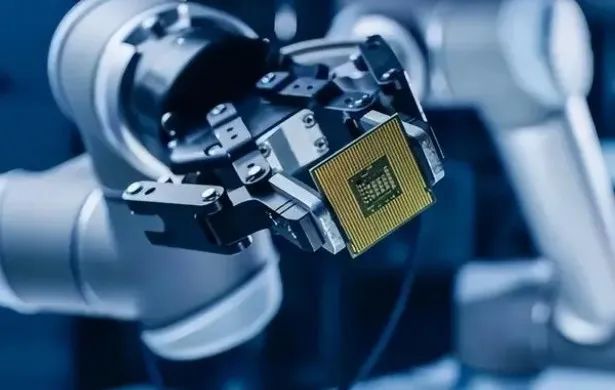Author
On June 27, 2022, at the closing ceremony of the 24th Annual Conference of the China Association for Science and Technology, the association solemnly announced 10 leading industrial technology issues, including the engineering and industrialization of chips. Chips are likened to the ‘grain’ of industry, the cornerstone of the information industry, and the key to seizing opportunities in a new round of technological and industrial revolution. In this issue, we will take a closer look at chips and understand them.
The long-term game between China and the United States continues, accelerating the process of semiconductor localization. More and more companies in mainland China are entering the chip-making industry, whether they are mobile phone manufacturers, automotive companies, or even home appliance manufacturers, all starting their ‘chip-making journey’.
The U.S. sanctions against Huawei have stimulated the development of local chip companies in China.
In the past two years, the U.S. has taken action against Huawei four times, not only discrediting Huawei’s 5G communication equipment but also using modified chip bans to restrict Huawei’s use of 5G chips, directly affecting Huawei’s mobile phone business.
However, everything has two sides. The U.S. cutting off chips from Huawei has not only impacted Huawei’s development but also had a huge effect on local semiconductor companies in China, even causing a major reshuffling of the global semiconductor market. Today, China’s semiconductor industry has fully launched self-research, and the process of ‘de-Americanization’ is accelerating.
The chip shortage and significant price increases have made many companies realize that they cannot overly rely on foreign suppliers in the supply chain, but should seek suitable chip suppliers domestically or develop chips independently. This poses a challenge as well as a rare opportunity for independent chip development companies.

What Are the Dilemmas of Domestic Chip Companies?
01 Rapid Splitting of Chip Companies
Under the ongoing wave of ‘chip shortages’, ‘cross-industry chip-making’ is becoming increasingly popular. In 2021, both automotive and mobile phone manufacturers, as well as internet giants, continuously entered the ‘chip-making’ track, and even real estate, home appliance, department store, and cement companies have directly crossed into the tech industry to start their chip-making journey.
This means that too many chip companies are being registered, which is likely to lead to a situation of scattered funds and talent shortages, as chip companies are inherently capital, technology, and talent-intensive.
02 Talent Dispersal in the Chip Industry
In terms of the overall environment of the chip market, the emergence of a large number of chip companies will inevitably lead to a dispersal of talent. The chip industry has entered a ‘cutthroat’ talent competition. According to the ‘2022 Talent Market Insight and Salary Guide’, in the context of continuous chip supply shortages, salaries have risen across all functions. Among them, the annual salary of leading figures in CPU/GPU, leading talents in heterogeneous computing, and AI chip R&D directors exceeds 2 million; the salary increase for IC design engineers in the integrated circuit field and chief medical officers in the biopharmaceutical field can reach up to 50%. An innovative talent is often approached by more than 10 headhunters or invited for interviews by employers, with 4-5 job offers being common.
Companies are eager for talent, but high-end talent is extremely scarce, making recruitment and retention difficult, which has become a constraint on the development of innovative companies.
Domestic startups are gradually disappearing, and many ‘chip-making small workshops’ have emerged. Additionally, a significant number of companies lack sufficient startup capital and do not have their own ‘base’, instead relying on financing to maintain their survival. These outcomes are not conducive to further strengthening the semiconductor industry.
03 Various Factions Competing for Funds
As is well-known, the chip industry is very capital-intensive. A mature 14nm chip manufacturing production line requires about $10 billion, leading many companies to fall into a ‘funds competition’. Due to the relatively high costs involved in chip manufacturing, not only is capital consumption high and time-consuming, but it is also nearly impossible to recover the investment costs. Throwing in a billion is like throwing water into the sea; no matter how big the cake is, it is hard for many companies to stand out.
Most segments of the chip industry require over ten years of accumulation to show results. The influx of funds cannot significantly enhance the industry’s technology and competitive strength in the short term. On the contrary, more and more companies are beginning to feel the pain caused by ‘overheated’ capital. With a large number of domestic entrepreneurs emerging, to compete for limited customers, competitors are rushing to offer lower prices, squeezing the profit margins of the chip industry.
04 Limited Technical Environment and Insufficient Localization Production Capacity
Due to the late start of China’s chip industry, there is almost no advantage in chip design and manufacturing. The localization production capacity for single crystal silicon and auxiliary manufacturing materials is insufficient. Furthermore, the technological monopoly and supply blockade by developed countries in Europe and America have placed key materials and equipment on the prohibited list, severely jeopardizing the stability of China’s chip industry system.
Chip technology requires photolithography machines, but the patented technology for photolithography machines is monopolized by ASML, a company highly influenced by Europe and the U.S. In the context of technological blockade against China, it is challenging to have substantial technical exchanges with this company, making it extremely difficult to independently develop domestic photolithography machines and achieve technological breakthroughs in a short time. These objective factors make China’s high-performance chips completely dependent on imports, and the ‘bottleneck’ problem is evident. Therefore, enhancing the supply chain of key raw and auxiliary materials for semiconductors in China is urgent.
How Can Domestic Chip Companies Break Through?
01 National Policy Support for the Chip Industry is Fundamental and Direct Political Support
The Ministry of Industry and Information Technology emphasized at a press conference in March 2021 that the information society of the 21st century cannot be separated from the integration of chips and integrated circuits. The high-quality development of the chip industry relates to the development of the modern information industry and industrial chain. Technological developments have achieved remarkable results, with significant progress in key processes, technologies, and materials over the past 20 years. The comprehensive development capabilities of enterprises are continuously strengthening, with a batch of new leading companies emerging.
By increasing tax reductions for enterprises and implementing a series of measures in talent reserve and training, the country aims to strengthen cooperation globally. Integrating the industrial chain into the wave of globalization promotes a virtuous cycle of development, providing support for domestic self-information development and offering strong support for the community of shared future for mankind.
Through tax, subsidies, and distribution adjustments, the ability to industrialize the integrated circuit industry continues to strengthen, driving chip companies to enhance product technology, expand scale effects, and reduce product costs, thereby bringing positive signals and better experiences to consumers of terminal equipment in the industrial chain, attracting more consumers to purchase products containing domestically developed chips, and thus forming a virtuous cycle internally and externally.
Macroeconomic policies provide not only strong but also beneficial and motivational institutional guarantees for the market expansion of China’s chip companies. This gives the most powerful logistical support for China’s chip companies to achieve standardized, orderly, branded, and sustainable strategic goals.
02 Enhance the Cultivation of Talent in the Chip Industry and Increase Overall Support for ‘Production, Learning, Research, and Use’
Talent is the cornerstone of high-tech. It is necessary to improve the domestic integrated circuit talent cultivation mechanism, further strengthen cooperation among integrated circuit companies, higher education institutions, and research institutes, and carry out training special base construction, closely combining enterprise development with market demand to dynamically adjust teaching content and practical methods, focusing on cultivating high-level, compound talents, and promoting close integration of production, education, and technological frontiers.
Establish effective technological innovation incentive systems, recognizing and rewarding high-end talents who have made outstanding contributions to integrated circuit development, stimulating the innovative and creative vitality of talents, and creating an atmosphere of continuous innovation in independent research and development.
Guided by the national demand for major integrated circuits, launch a national major scientific engineering research exploration plan to actively promote the high-end process of domestic chip design and manufacturing, leading from point to area, and comprehensively improving the technical level of all aspects of chips.
03 Establish an Independent and Controllable Safe Domestic Chip Industry Chain and Supply Chain System
China’s chip industry chain is relatively fragile; as long as one link in the supply chain breaks, it will be ‘choked’ by others, putting the entire chip industry in a passive state and even bringing a crisis to the country’s economic and social development.
In the new development stage, to break free from the passive situation of being constrained in the development of the chip industry, China must fully grasp the cutting-edge technological achievements and advanced innovative applications formed by the new round of global technological revolution, steadily promote the localization and domestic production of key core equipment, design software, and key materials in the chip industry chain.
Additionally, actively build an autonomous and controllable chip industry chain and supply chain system to steadily increase the self-sufficiency rate of chips needed across various industries in the country, enhance the service capacity of domestic upstream manufacturers to downstream, increase customer stickiness, and reduce the impact of changes in market demand or supply on the operational status of enterprises. This will further enhance the cooperation level between domestic integrated circuit upstream and downstream manufacturers, enabling local suppliers to have certain supporting service capabilities in the industry chain and reducing the possibility of partial or total collapse of the supply chain when facing disruptive factors. At the same time, it will decrease dependence on chip technology and products from unfriendly countries, regions, and entities, to achieve technological self-reliance and strength in the national chip industry.
Source: Semiconductor Industry Overview, Yi Liao Finance, People’s Forum Network

Copyright Statement: We focus on sharing; articles, images, and videos are sourced from the internet, and copyright belongs to the original authors. If there are any objections, please inform the editor and we will delete it in a timely manner.

Want to know more? Then hurry up and follow us